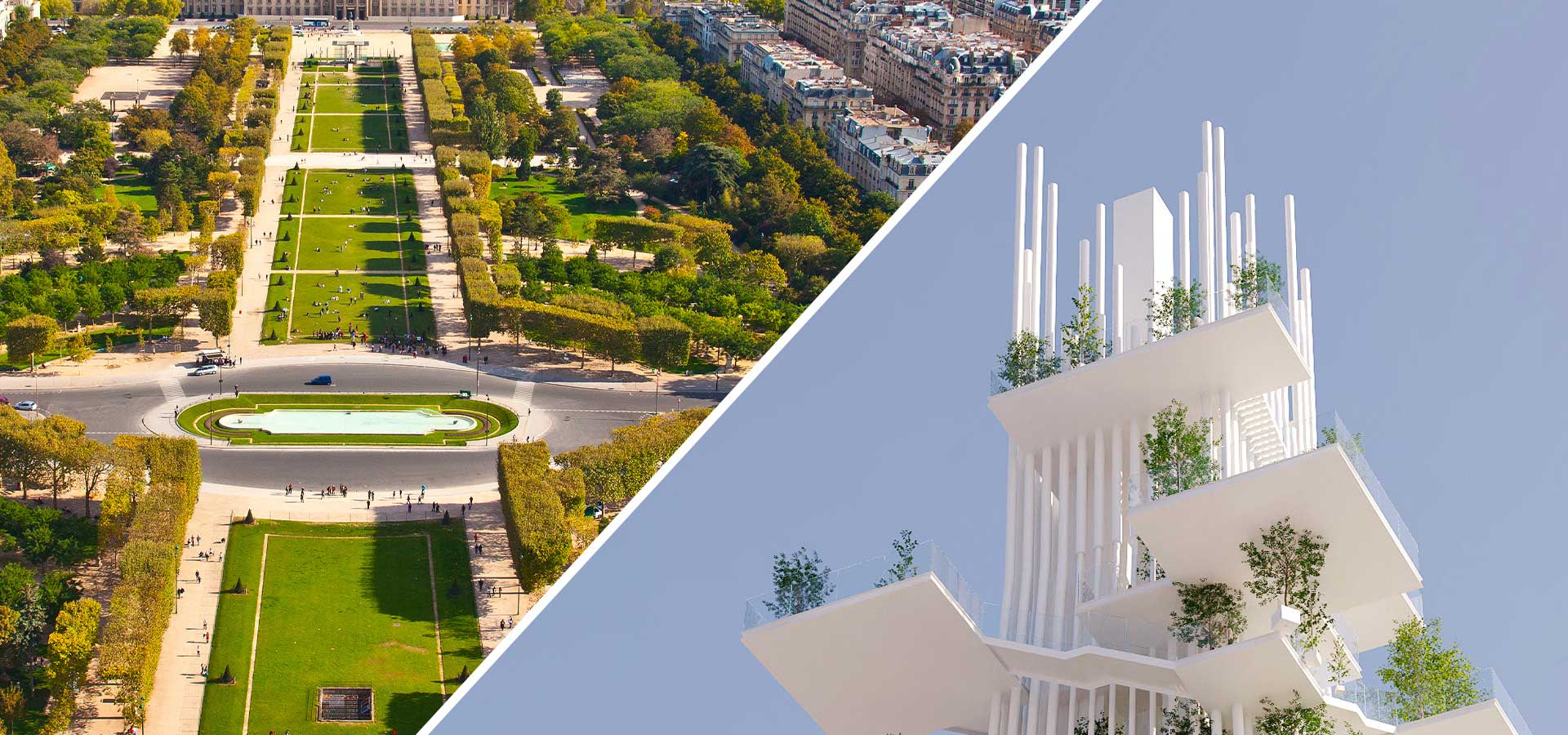LEAVE NOTHING TO CHANCE
Designing a project as complex as the Eiffel Tower leaves no room for error. The virtual twin helps public authorities to collaborate, test, assess, and make science-based decisions at every step of the process.
Perfect planning – how to get the full vision of your sustainable city from day one
Sustainable urban development increasingly depends on cities’ ability to reduce CO2 emissions, limit the consumption of building materials, improve water and waste management systems, and develop reliable and safe urban infrastructure.
With this in mind, Dassault Systèmes chose to imagine the new tower as a Vertical Garden, that would enrich the lives of Parisians and showcase sustainable construction methods.
Such large-scale projects need to be considered in their city context. A building’s height, for example, can impact nearby neighborhoods in terms of shadow and airflow. Large building can also play a role in accelerating the heat island effect. Having a vertical garden means that water consumption rates also need to be modelled.
To address these challenges, our team of experts created a virtual twin of the new tower on the 3DEXPERIENCE® platform. Virtual twins work by leveraging consistent, comprehensive, and cross-silo sets of data to build what-if scenarios, and to provide a shared workplace where all stakeholders can collaborate seamlessly and securely. Work takes place within clear guidelines, ensuring reliable review processes and data compliance.
When it came to planning the new tower, the virtual twin allowed the team to:
- Understand the initial situation by aggregating and analyzing data from multiple sources
- Design the tower, incorporating the impact and cost of different construction scenarios
- Collaborate over a single source of truth, accessible to all internal and external stakeholders
- Communicate information about why decisions were made to all stakeholders
The virtual twin also tackles silos and allows teams to share data, collaborate with ease, and monitor the implementation of the project, all in one place. This is how the virtual world improves the real world and fosters sustainability-driven decision-making.
Learn more about City virtual twin solutions
Discover in the testimonial of our expert, Guillaume LENOEL, how the 3DEXPERIENCE® platform allows public authorities to use a virtual twin of their city to collaborate, make decisions, and gain a better understanding of their territory.
The 3DEXPERIENCE® platform powering City virtual twins is a game changer in urban planning: it enables citizens and all public and private stakeholders to design and experience together a more sustainable and resilient city.
Discover more about the future of Infrastructure and Cities
What’s next? How to act now? How to measure your impact and identify the skills to transform?
Deep Dive Now
© design of the new tower by Nicolas Laisné Architectes

